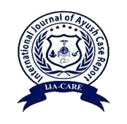Post-Herpetic Neuralgia Treated by Wet Cupping: A Case Report
Abstract
The Raktamokshana (bloodletting) therapy of Ayurveda is a popular para surgical procedure as well as sanshodhan (purification) therapy in various diseases caused by vitiated pitta dosha and impure rakta dhaatu. As per Ayurveda, bloodletting is beneficial in Raktaja-Pittaja diseases, cellulitis, inflammatory swelling, wound healing, abscess, postherpetic neuralgia, etc. The therapeutic removal of blood helps to remove toxins, facilitate circulation and enhance oxygenation. The "Kaksha" disease of Ayurveda mentioned in "Kshudraroga" has features similar to conditions of postherpetic neuralgia (PHN). The Raktamokshana is mentioned for the treatment of Kaksha in the Sushruta Samhita. As the pathology is situated at twacha (skin) level, so specifically, the wet cupping model of bloodletting is adopted here. A 70-year-old male patient has been diagnosed with postherpetic neuralgia based on history, clinical features, and examination. The single-cup was applied for wet cupping therapy at the local site after making a small nick with appropriate pressure. The bleeding was completed and then it was removed, followed by aseptic cleaning and dressing. The bloodletting procedure of Ayurveda is helpful in draining impure blood, which is vitiated by dosha. After the bleeding, the impure blood was let out and the patient got relief. The patient's symptoms of pain, hyperesthesia, and patches subside after three sittings of bloodletting (wet cupping). The bloodletting by wet cupping in postherpetic neuralgia has a promising effect.

This work is licensed under a Creative Commons Attribution-NonCommercial-NoDerivatives 4.0 International License.

